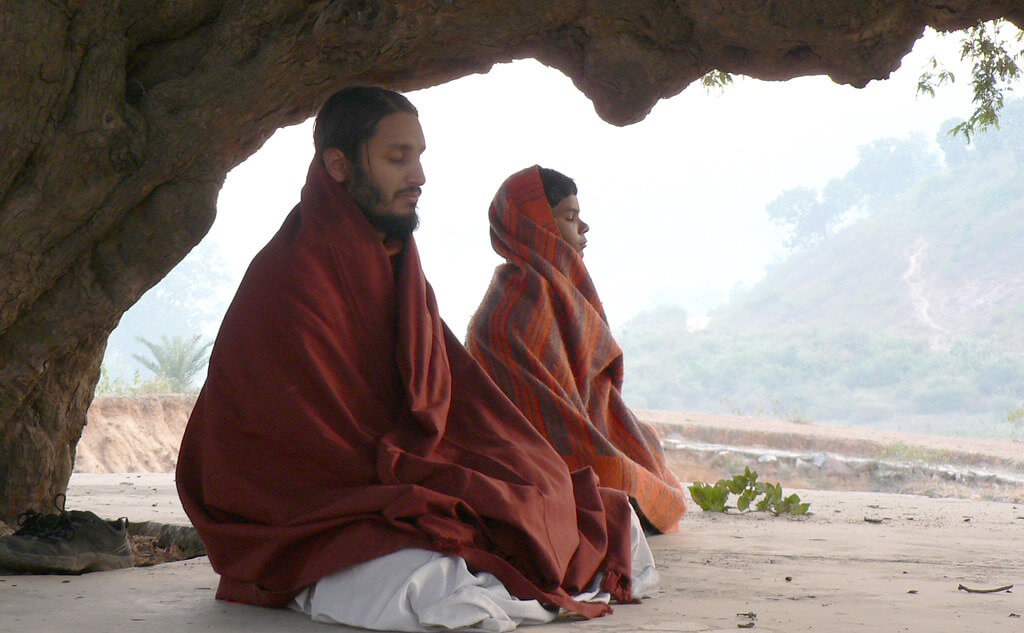What is Yog?
 Table of Contents
Table of Contents- What is yoga?
- Is it necessary to tame the mind?
- What is the last step of yoga?
- Can every person do yoga?
What is Yoga?
Yoga is an Indian philosophy or scripture. It consists of 6 schools of thoughts:
- First-Second-‘Nanya-Vaiseshika’
- Third-Fourth - ‘Samkhya Yoga’
- Fifth-Sixth - ‘Vedanta and Mimamsa’
The most proven formulas on ‘Yoga Darshan’ are considered to be the sutras written by Maharishi Patanjali.
According to the Patanjali Yoga Sutra - ‘Yogeshchitta Vrittinirodha’
That is, ‘stopping the movements of mind is yoga’. The thought waves that rise in the mind are called ‘vritti’ (vortex). Stopping these ‘vrittis’ is called yoga.
By the way, the literal meaning of yoga is - addition. Actually, yoga also adds or connects. Who connects? Whom does it connects to? These questions are bound to arise.
The result of yoga is - the connection of ‘soul’ and ‘divine’. Therefore, the joining of the soul with the divine is called yoga.
Since ‘yoga’ is reconciliation or ‘joining’ of soul with God, so a yogi considers himself to be near the divine and considers everyone to be the child or part of the same Supreme Father. Therefore, he sees all beings as he sees himself. The Yogi does not hurt anyone, considering everyone as the son of the same God. He loves everyone The feeling of sin, sorrow, anger, libido and suffering are all removed from his mind. This is yoga.
The root cause of all the miseries of the world, the cause of all conflicts are - selfishness, pride and profit. Yogi goes far beyond these. Because he moves closer to God.
The Yogi gets this God-realization by doing ‘yoga practice’. How to do these yogic practices? This is what the science of yoga teaches.
Is it necessary to tame the mind?
Through the mind the soul interacts with and perceives external objects. And the mind is connected with the senses, via which it comes to know about the external world, e.g. sense eof smell, sense of sight etc. It is sometimes attached to all the senses and sometimes to one. Sometimes with none of the senses.
Mind is very fickle. The mind is transitional. It keeps running from here to there.
But it also has the power of insight. Instead of looking out towards the external world, a person can use it to look in the deepest arena of his inner space.
The aim and purpose of a Yogi is the development of this insight. But this is not possible without taming the mind. Why is it like this? Let us understand this using an example.
Our mind or ‘chitta’ is always vibrating and producing waves - waves of desires, waves of emotions etc. If we go to a pond and try to see the bottom of it, it’s not visible. Why is the bottom of the pond not visible to us?
The reason is that the water in the pond is not pure and there are waves in it, i.e. water is not stationary.
If the water is perfectly clean, and there is not a single wave in it, then it is a sure thing that we will be able to see the bottom of the pond.
Our ‘chitta’ or mind is that pond and our real self is the bottom of that pond. Those desires and emotions are waves. Ignorance and lack of character of the mind is that filthiness. If we can remove all of this, then we can see the true form of ourselves. Yoga is the science of subduing or stopping these vrittis or waves and cleansing of our mind.
Maharshi Patanjali has said that yoga is the practice of stopping the unnecessary and out of control movements of the mind, i.e. its emotions, thinking and imaginations. Mind is constantly striving to regain its natural and sacred state. But the senses keep pulling it outward towards sensory pleasures, say money, women/men, luxury etc. Suppression of this tendency of mind to seek pleasures outside and turning it inwards on a path leading to the conscious soul, this is the first step of ‘yog’. It is only yog that can do such a thing. It is impossible to do so without ‘yog’.
What is the last step of yog?
The last step in the process of ‘yog’ is samadhi. In ‘samadhi’ we are much closer to God. To reach this state, concentration of the mind is very important. Because only a concentrated mind can take us into ‘samadhi’ and concentration is possible only with ‘yog’.
Therefore, we can define yoga in this way - “To connect the soul to God, the practice of stopping the vrittis of the mind, controlling it, converging it and attaining the state of samadhi is yoga”.
Can every person do yog?
All beings have a mind. But not all beings are capable enough to transform it into intelligence. The mind of animals and birds cannot resist the bare instincts, such as that of sex and hunger. Only human beings can control and transform the mind and turn it inwards by doing yoga, and eventually attain salvation.
Many people are under the impression that yoga is not for everyone. But this is a myth.
Whoever is a ‘man or a woman’, whose body is of a human and has a strong desire for ‘yoga’, he/she can do yoga practice.
Yoga is universal. It is not related to any religion, community or race. Any human being can learn, understand and do yoga. There are no restrictions.
This learning is not as complex as many people think. Many writers or yogis have described this learning as arduous. But it is not so. Yoga is not impossible. There is no secret in this spiritual science.
Every sincere human being can learn ‘yog’ in the care of a good guru/master.
